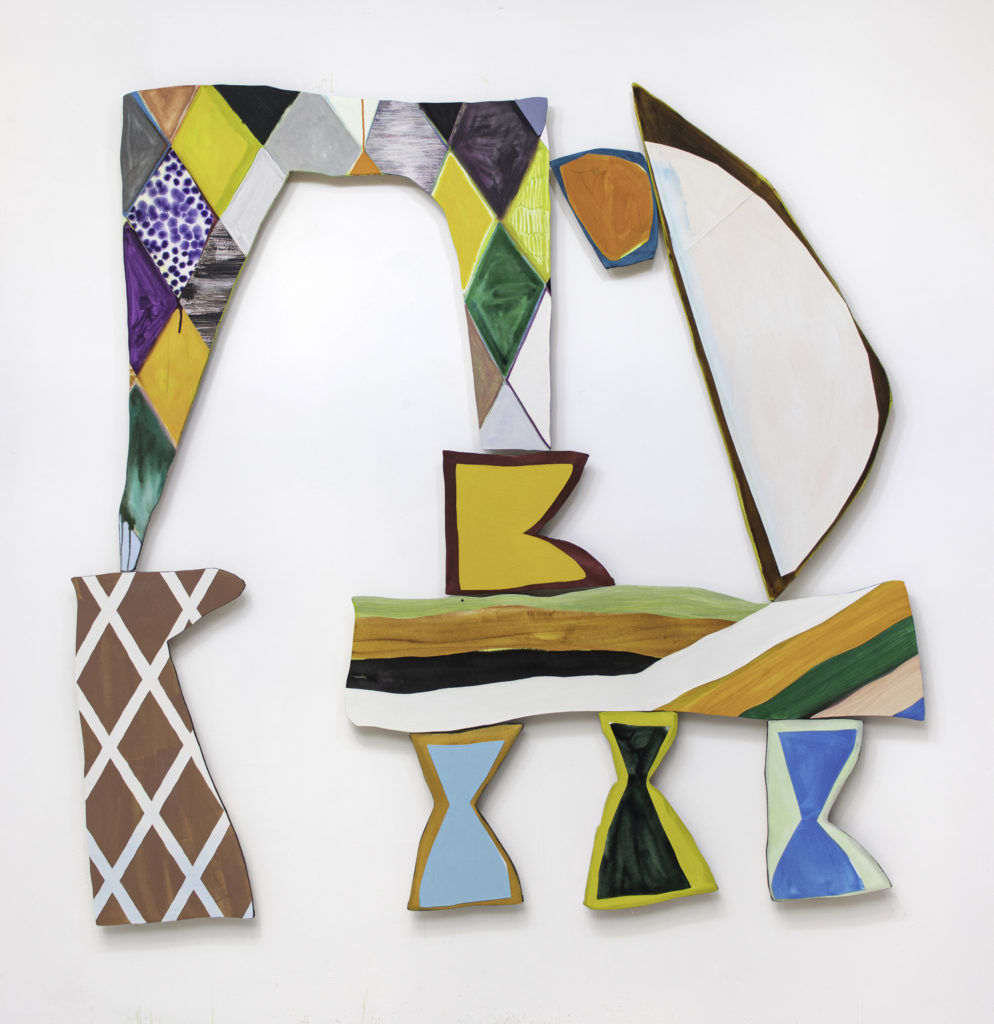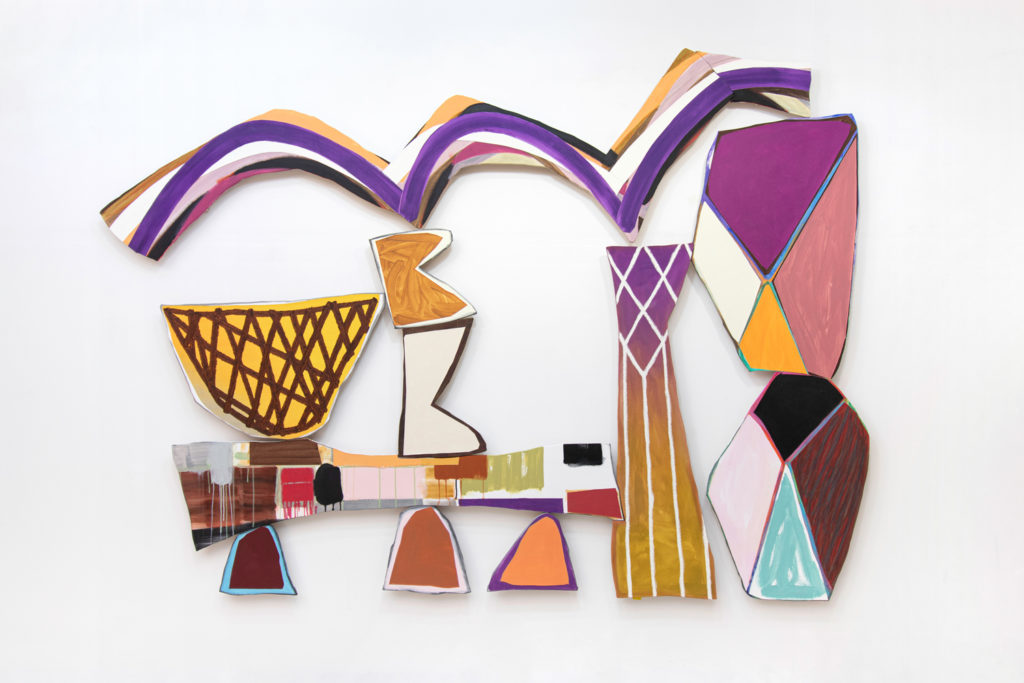Read on The New York Times
2 Art Gallery Shows to See Right Now
Justine Hill makes more with less in her multipart abstract paintings; Kevin Beasley mixes the political with the personal in “Reunion.”

By Roberta Smith and
Justine Hill
Through Oct. 31, Denny Dimin Gallery, 39 Lispenard Street, Manhattan; (212) 226-6537, dennygallery.com.
Justine Hill’s bright, multipart paintings are good and good fun, but it has taken some serious work to get them there. You can see it happening in “Touch,” her latest solo show in New York.
Five years ago, Ms. Hill broke her paintings into separate parts by cutting out eccentric shapes in plywood that she would cover with canvas, paint with various colors or patterns and hang together in rectangular configurations on the wall. The plywood is thin, making the works seem flatter to the wall than most paintings. They might almost be frescoes.
The paintings from 2020 are better than those from 2019 (one is on view; three are in the catalog). Looser, jauntier, they make more of less. Ms. Hill has been using more white: that is, arranging the parts of her paintings over greater areas of wall space. This expansion helps. She’s also using fewer colors (often two) on each part. And there’s as much drawing as painting: repeating waves in, say, goldenrod yellow or lipstick pink on black or white and networks of intersecting lines, some of which form harlequin patterns. The shapes often have resemblances — sometimes more than one — to columns or arches, tables or stools, baskets or vases. In fact two of the larger works, “Kilter” and the appropriately titled “Handwork” (craft is a big subject here), can read as stage-set-like interiors.

In the three paintings from her new “Replica” series, Ms. Hill heads in a more abstract direction, which is promising. In addition to Matisse and Picasso, she has paid attention to 1970s Pattern & Decoration painting, the ceramic wall pieces of Betty Woodman and the shaped paintings of Elizabeth Murray. Ms. Hill’s work proves that earlier ideas can always sustain new thought.
ROBERTA SMITH

